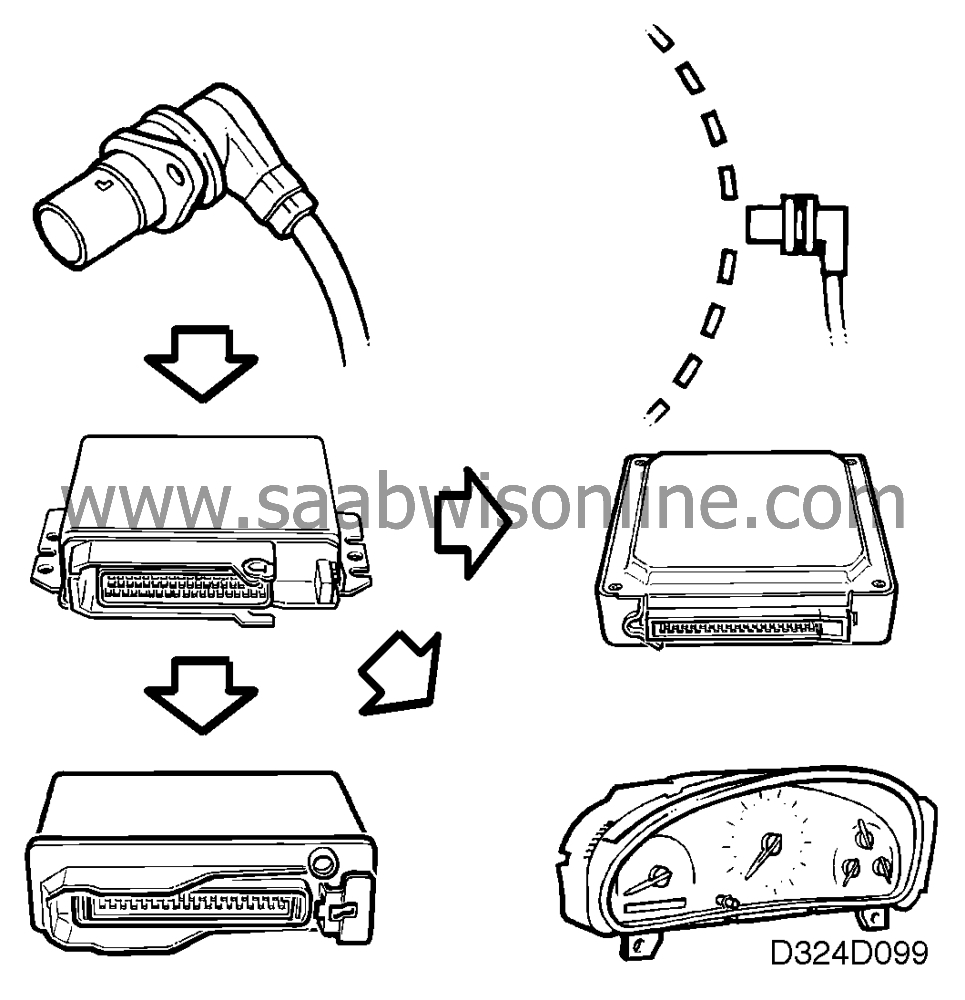Engine rpm
| Engine rpm |

| Crankshaft position sensor |
Signals from the crankshaft position sensor containing information on the position and speed of the crankshaft are applied to pins 48 and 49 of the control module.
The sensor consists of a perforated disc mounted on the crankshaft at the flywheel end and also of an inductive sensor mounted in the engine block.
The distance between the perforated disc and the sensor is 0.4-1.3 mm. The inductive sensor works somewhat like a small alternator, the sine-wave voltage of which increases with increasing rpm.
The sine-wave voltage alternates between positive and negative polarity, which is accomplished by alternate holes and ribs on the perforated disc. This alternating polarity is used by the control module as a pulse generator to determine the speed of the crankshaft.
The perforated disc has 58 (60 less 2) ribs and a larger hole where two ribs have been removed. This larger hole is used to determine the position of the crankshaft.
Each rib and adjacent hole corresponds to 3°, i.e. 6° together. The total for a complete crankshaft revolution is then 6 x 60 = 360°.
The larger hole in the perforated disc is displaced 84° in relation to TDC, which enables the control module to calculate rapidly when cylinders 1 and 4 are at TDC. To determine which of these two cylinders is to have a spark, the control module must also receive information from the camshaft position sensor.
The voltage signal from the crankshaft position sensor increases with crankshaft speed; at idling speed it is about 7-10 V (AC) and at 2500 rpm about 20 V (AC).
Using a multimeter set for a.c., a reading of about 2-5 V should be obtained on pins 1 and 2 of the sensor when the engine is turned over by the starter motor and a reading of 7-10 V when the engine is idling. At 2500 rpm a reading of about 20 V should be obtained.
If the sensor is defective or in the event of a break in the circuit, the engine will not start.
The resistance of the sensor is 540 ohms (±10%%).
| Engine speed (Td) |
The control module sends a signal from pin 43 containing information on engine speed.
This signal is a square wave of about 40 Hz at idling speed and about 125 Hz at 2500 rpm. Measured with a voltmeter, a reading of about 6.5 V will be obtained at idling speed.
The signal is used by the rev counter as well as by the TCS control module and the automatic transmission's AF22 control module.



